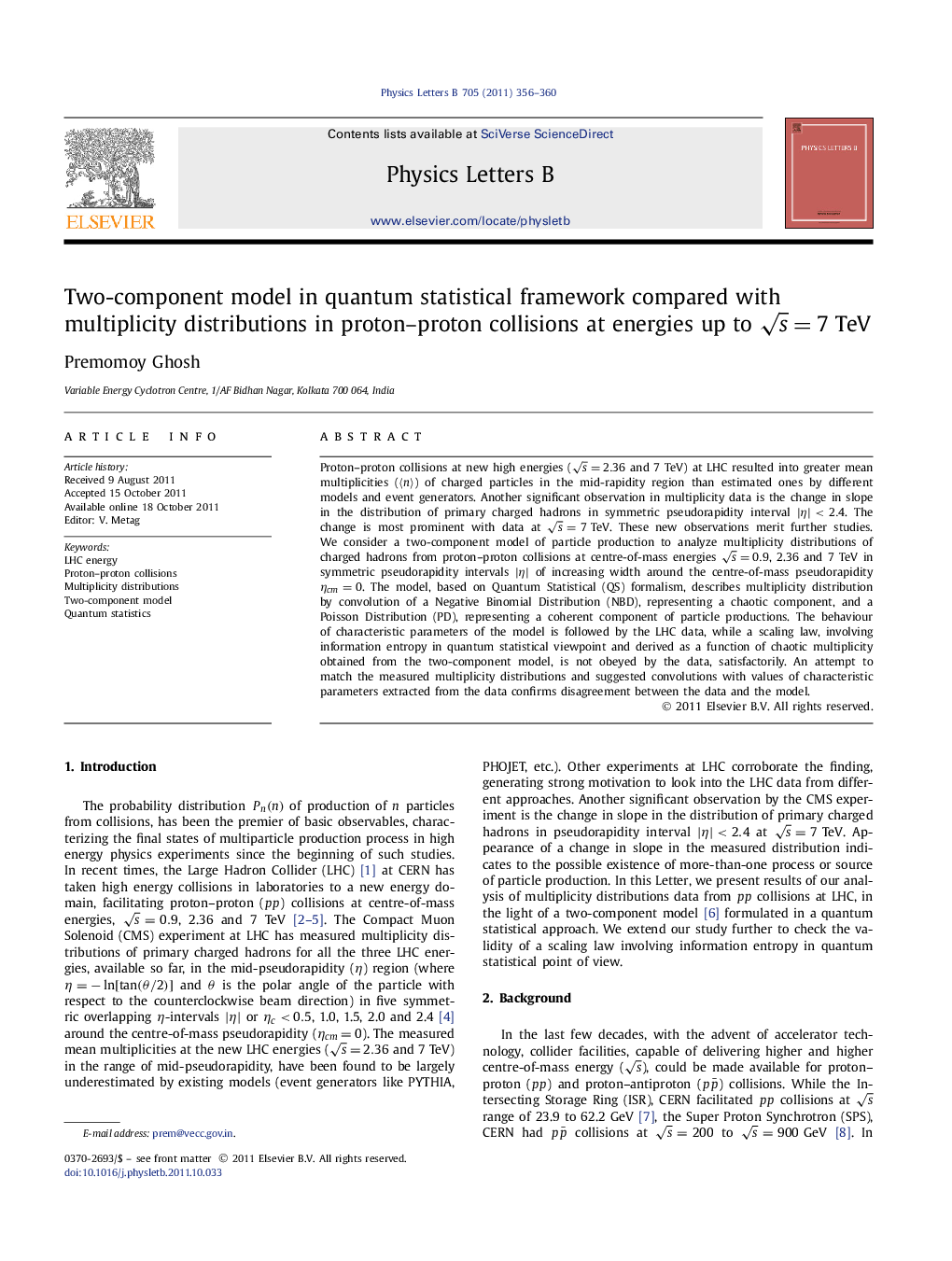| کد مقاله | کد نشریه | سال انتشار | مقاله انگلیسی | نسخه تمام متن |
|---|---|---|---|---|
| 10725085 | 1034082 | 2011 | 5 صفحه PDF | دانلود رایگان |
عنوان انگلیسی مقاله ISI
Two-component model in quantum statistical framework compared with multiplicity distributions in proton-proton collisions at energies up to s=7 TeV
دانلود مقاله + سفارش ترجمه
دانلود مقاله ISI انگلیسی
رایگان برای ایرانیان
کلمات کلیدی
موضوعات مرتبط
مهندسی و علوم پایه
فیزیک و نجوم
فیزیک هسته ای و انرژی بالا
پیش نمایش صفحه اول مقاله

چکیده انگلیسی
Proton-proton collisions at new high energies (s=2.36 and 7 TeV) at LHC resulted into greater mean multiplicities (ãnã) of charged particles in the mid-rapidity region than estimated ones by different models and event generators. Another significant observation in multiplicity data is the change in slope in the distribution of primary charged hadrons in symmetric pseudorapidity interval |η|<2.4. The change is most prominent with data at s=7 TeV. These new observations merit further studies. We consider a two-component model of particle production to analyze multiplicity distributions of charged hadrons from proton-proton collisions at centre-of-mass energies s=0.9, 2.36 and 7 TeV in symmetric pseudorapidity intervals |η| of increasing width around the centre-of-mass pseudorapidity ηcm=0. The model, based on Quantum Statistical (QS) formalism, describes multiplicity distribution by convolution of a Negative Binomial Distribution (NBD), representing a chaotic component, and a Poisson Distribution (PD), representing a coherent component of particle productions. The behaviour of characteristic parameters of the model is followed by the LHC data, while a scaling law, involving information entropy in quantum statistical viewpoint and derived as a function of chaotic multiplicity obtained from the two-component model, is not obeyed by the data, satisfactorily. An attempt to match the measured multiplicity distributions and suggested convolutions with values of characteristic parameters extracted from the data confirms disagreement between the data and the model.
ناشر
Database: Elsevier - ScienceDirect (ساینس دایرکت)
Journal: Physics Letters B - Volume 705, Issue 4, 17 November 2011, Pages 356-360
Journal: Physics Letters B - Volume 705, Issue 4, 17 November 2011, Pages 356-360
نویسندگان
Premomoy Ghosh,